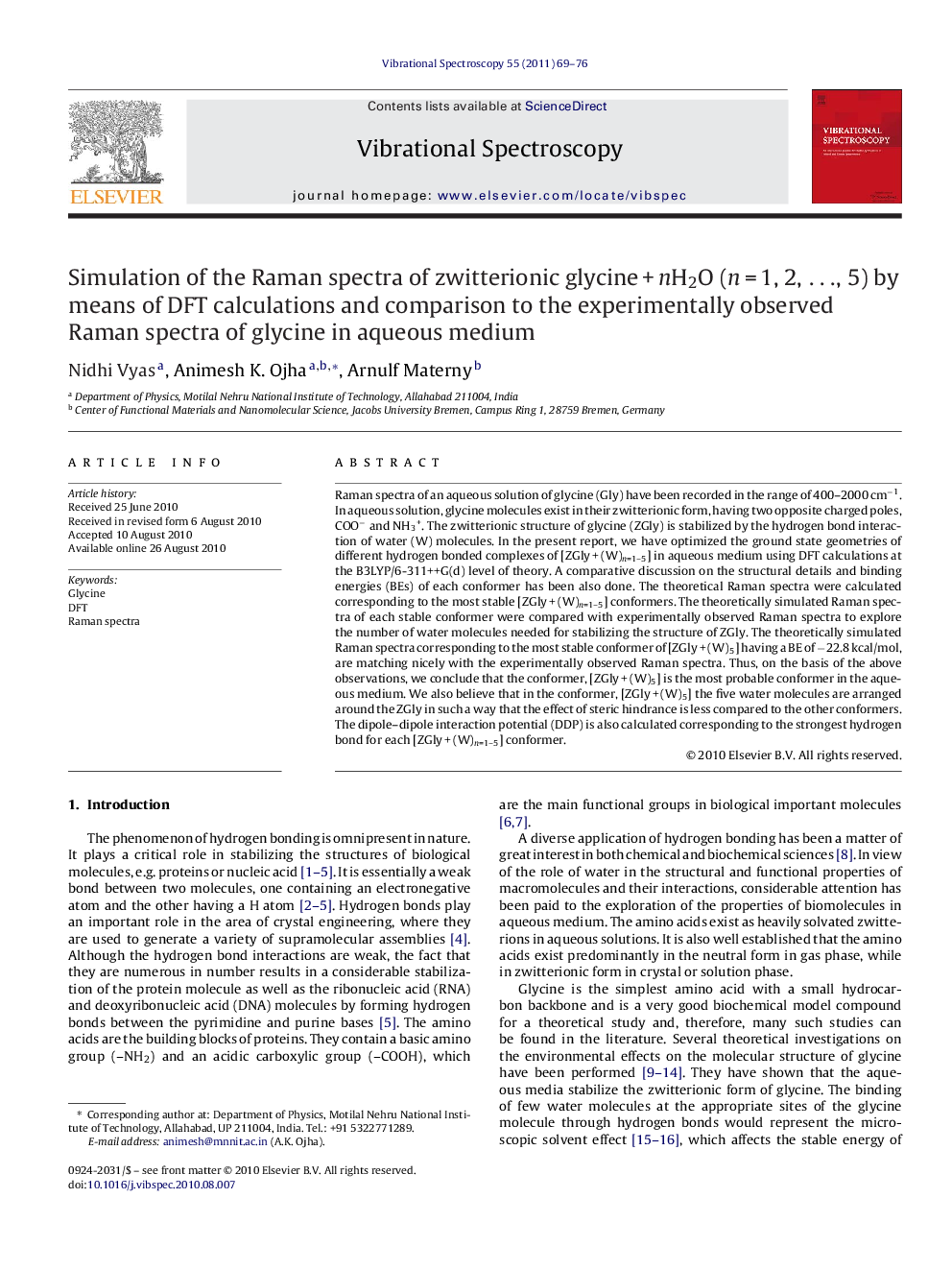| Article ID | Journal | Published Year | Pages | File Type |
|---|---|---|---|---|
| 1250285 | Vibrational Spectroscopy | 2011 | 8 Pages |
Raman spectra of an aqueous solution of glycine (Gly) have been recorded in the range of 400–2000 cm−1. In aqueous solution, glycine molecules exist in their zwitterionic form, having two opposite charged poles, COO− and NH3+. The zwitterionic structure of glycine (ZGly) is stabilized by the hydrogen bond interaction of water (W) molecules. In the present report, we have optimized the ground state geometries of different hydrogen bonded complexes of [ZGly + (W)n=1–5] in aqueous medium using DFT calculations at the B3LYP/6-311++G(d) level of theory. A comparative discussion on the structural details and binding energies (BEs) of each conformer has been also done. The theoretical Raman spectra were calculated corresponding to the most stable [ZGly + (W)n=1–5] conformers. The theoretically simulated Raman spectra of each stable conformer were compared with experimentally observed Raman spectra to explore the number of water molecules needed for stabilizing the structure of ZGly. The theoretically simulated Raman spectra corresponding to the most stable conformer of [ZGly + (W)5] having a BE of −22.8 kcal/mol, are matching nicely with the experimentally observed Raman spectra. Thus, on the basis of the above observations, we conclude that the conformer, [ZGly + (W)5] is the most probable conformer in the aqueous medium. We also believe that in the conformer, [ZGly + (W)5] the five water molecules are arranged around the ZGly in such a way that the effect of steric hindrance is less compared to the other conformers. The dipole–dipole interaction potential (DDP) is also calculated corresponding to the strongest hydrogen bond for each [ZGly + (W)n=1–5] conformer.
